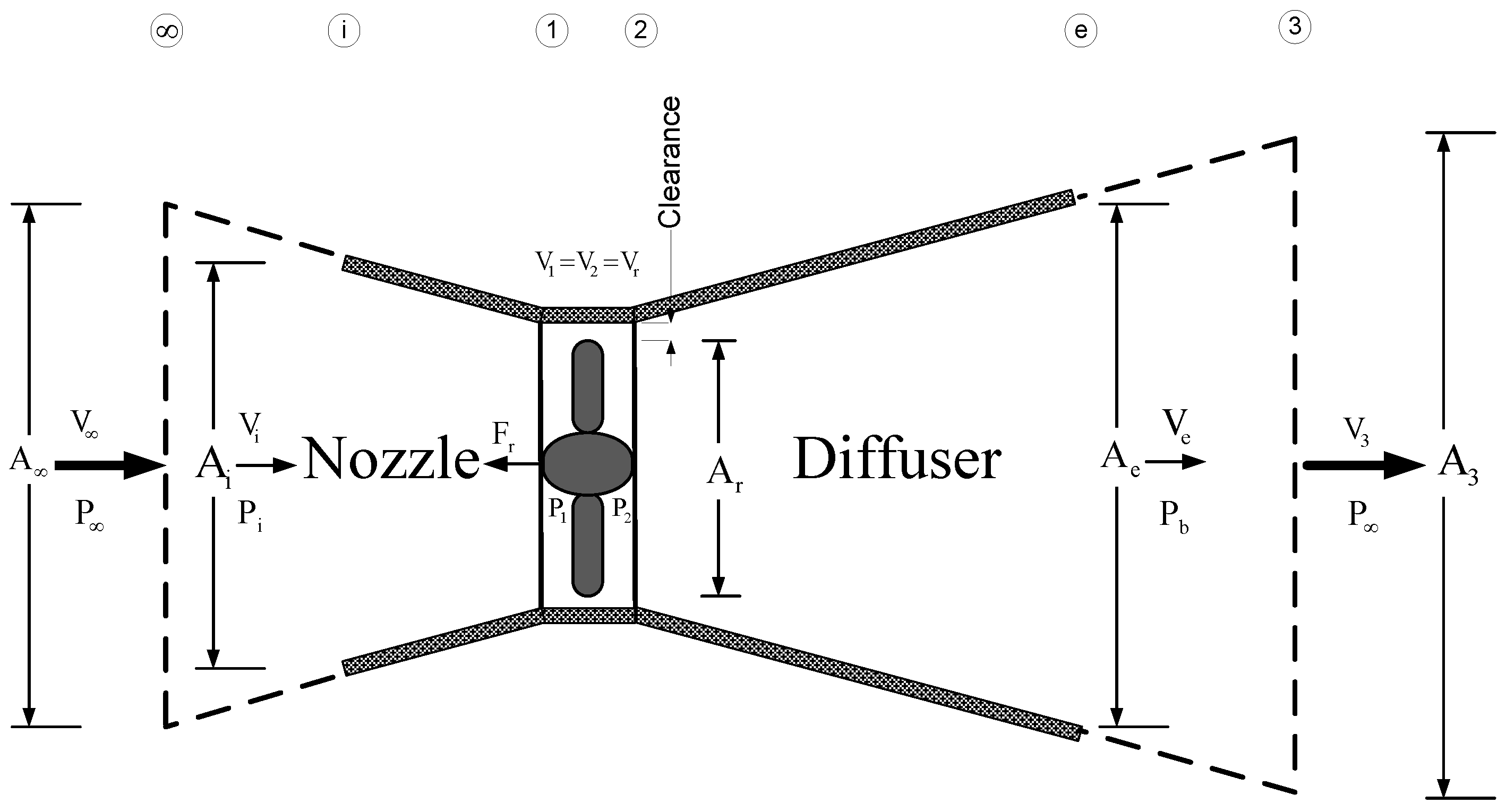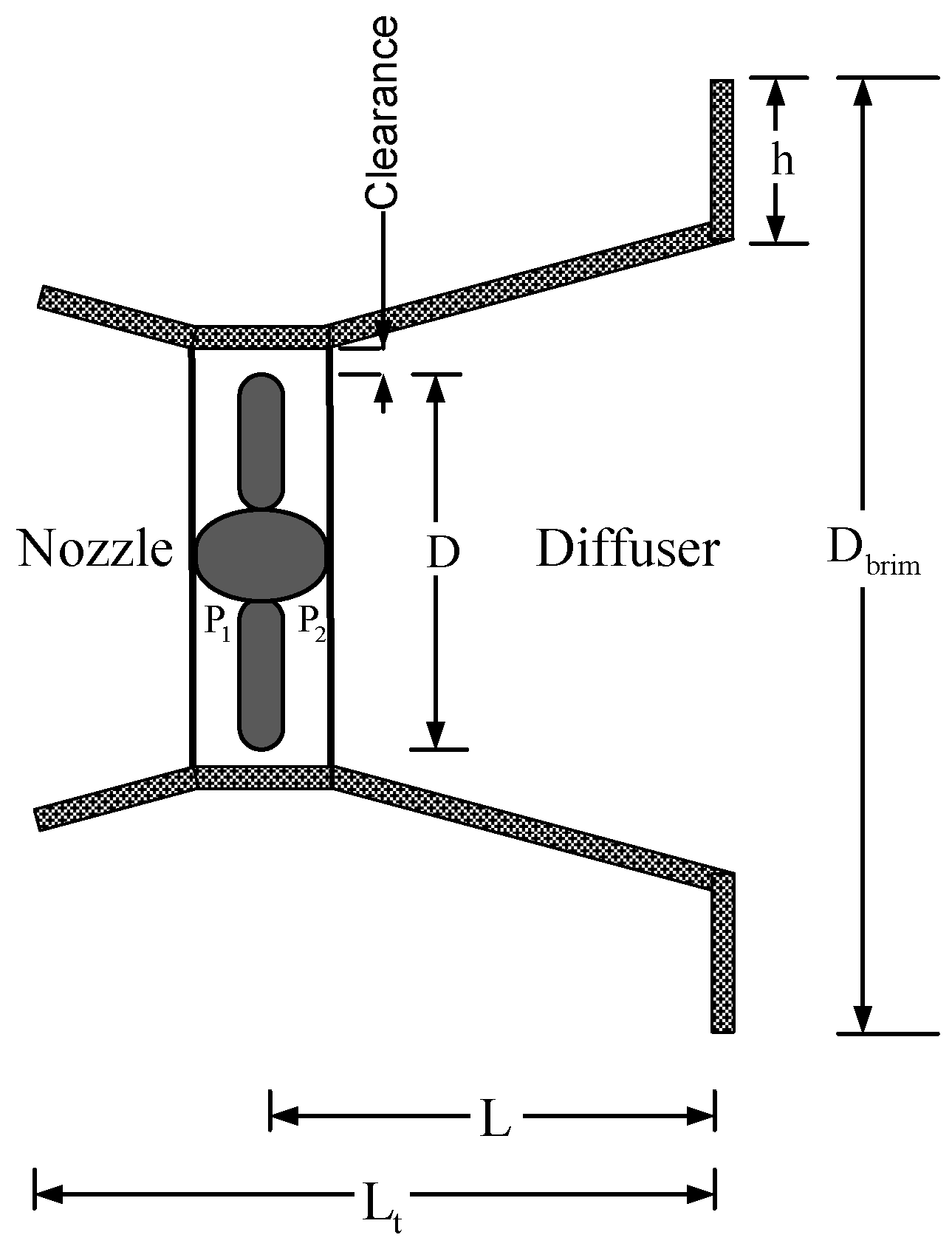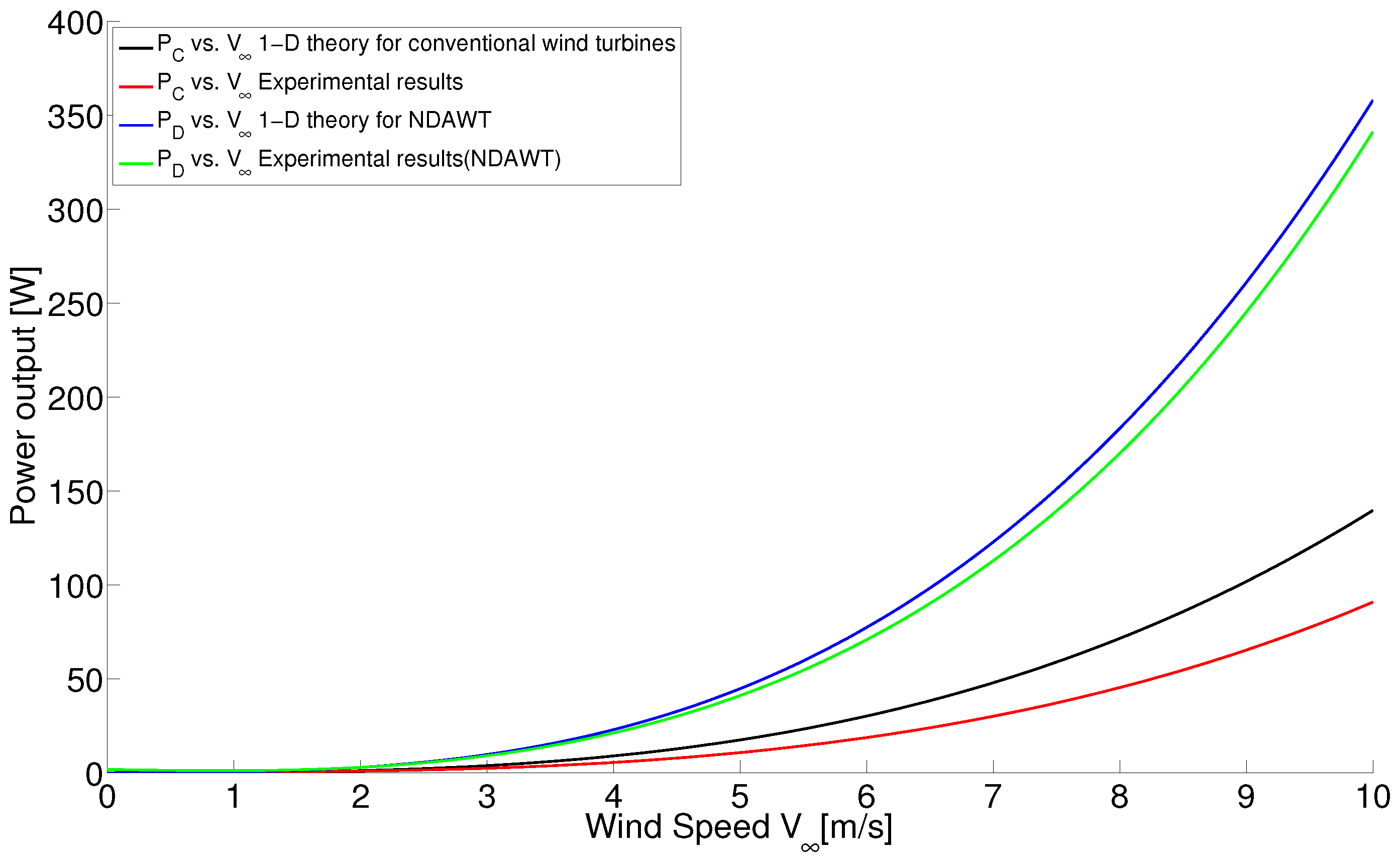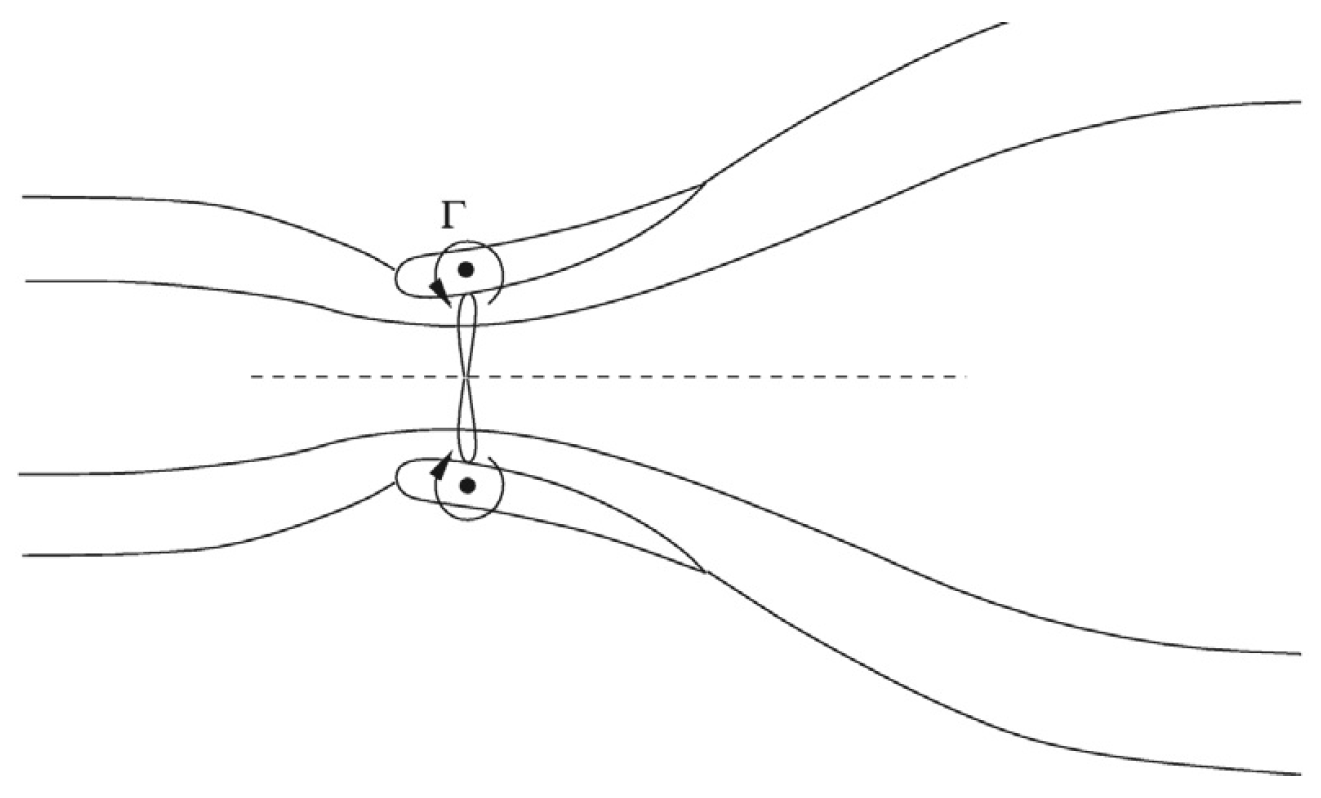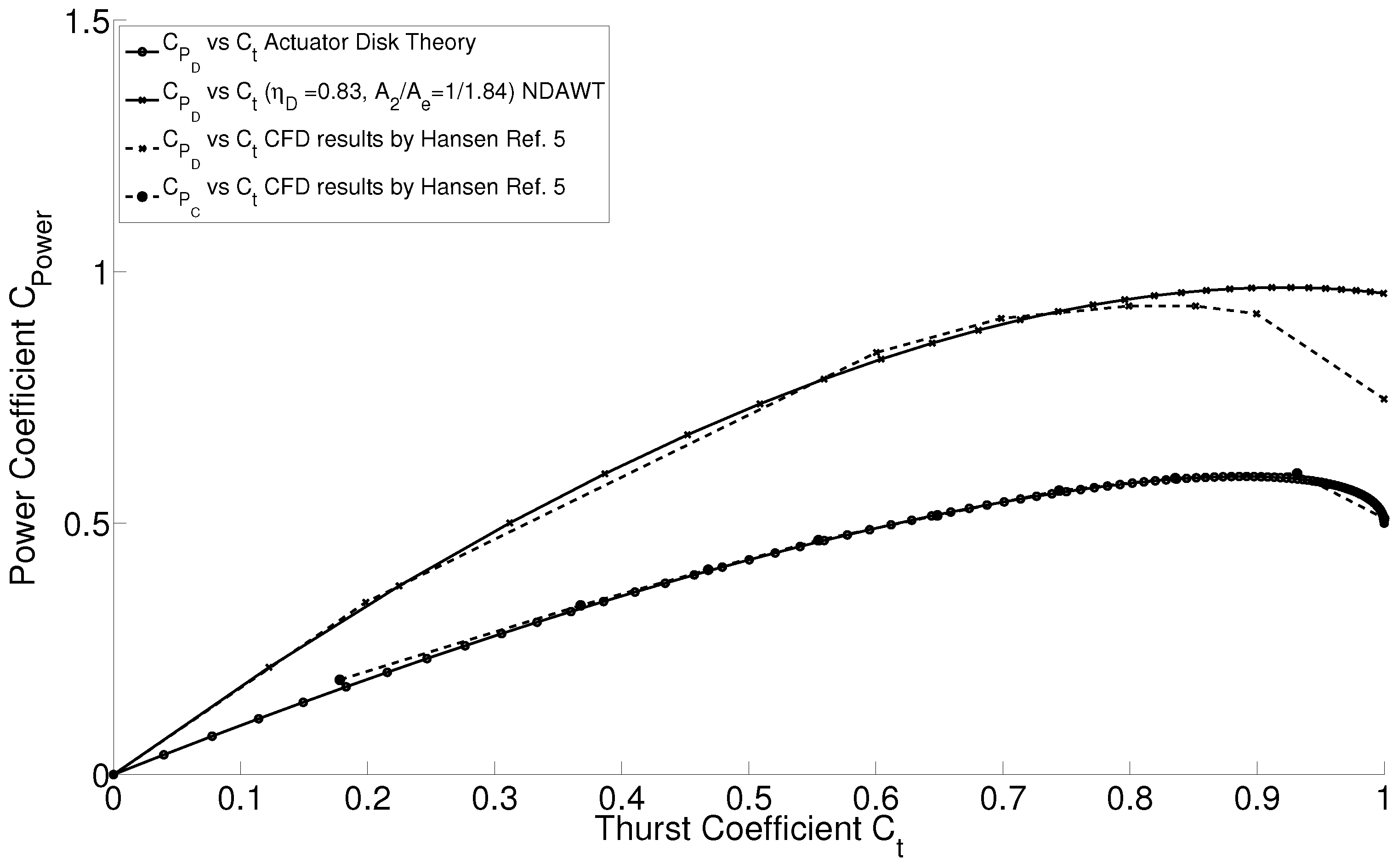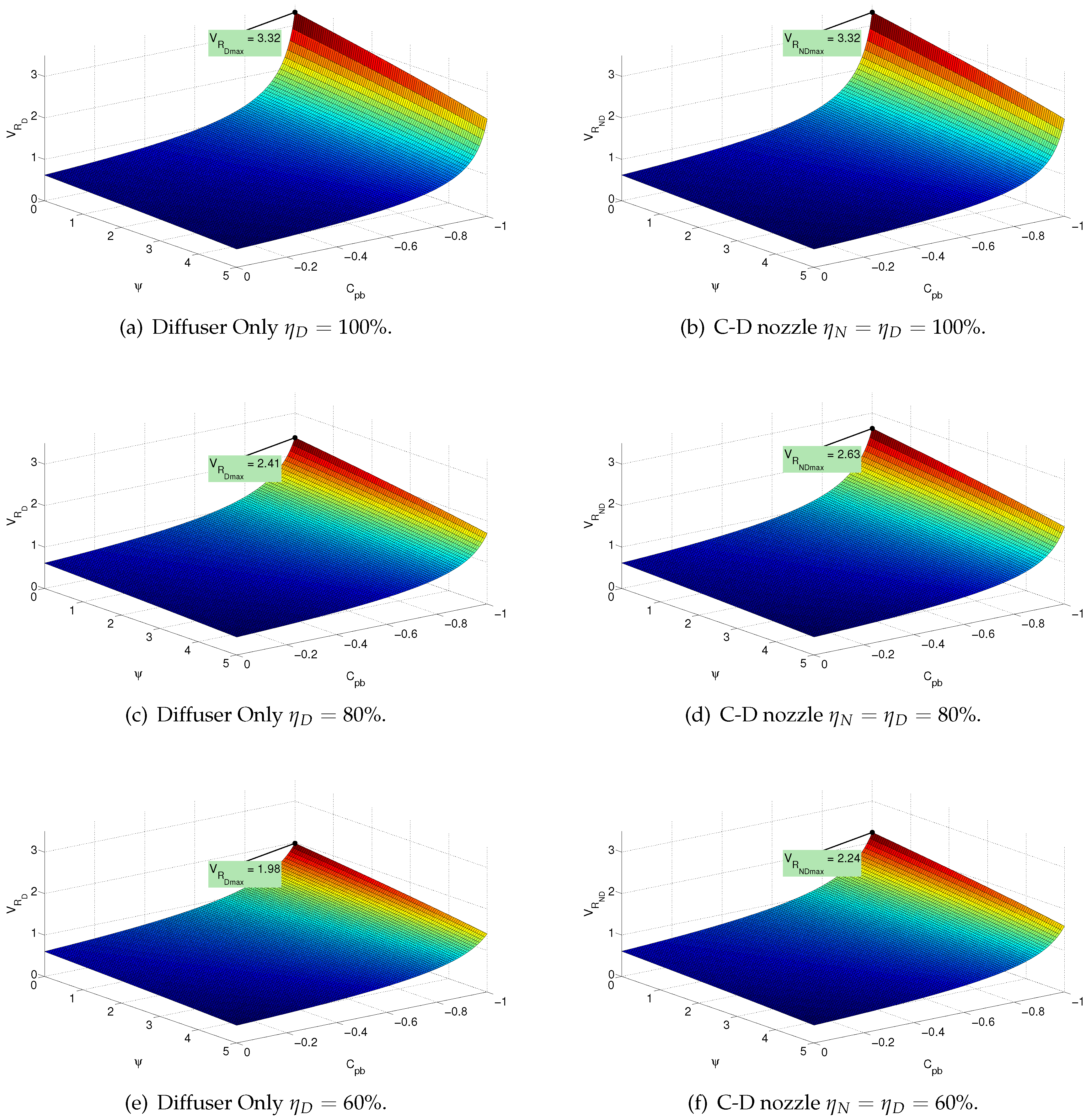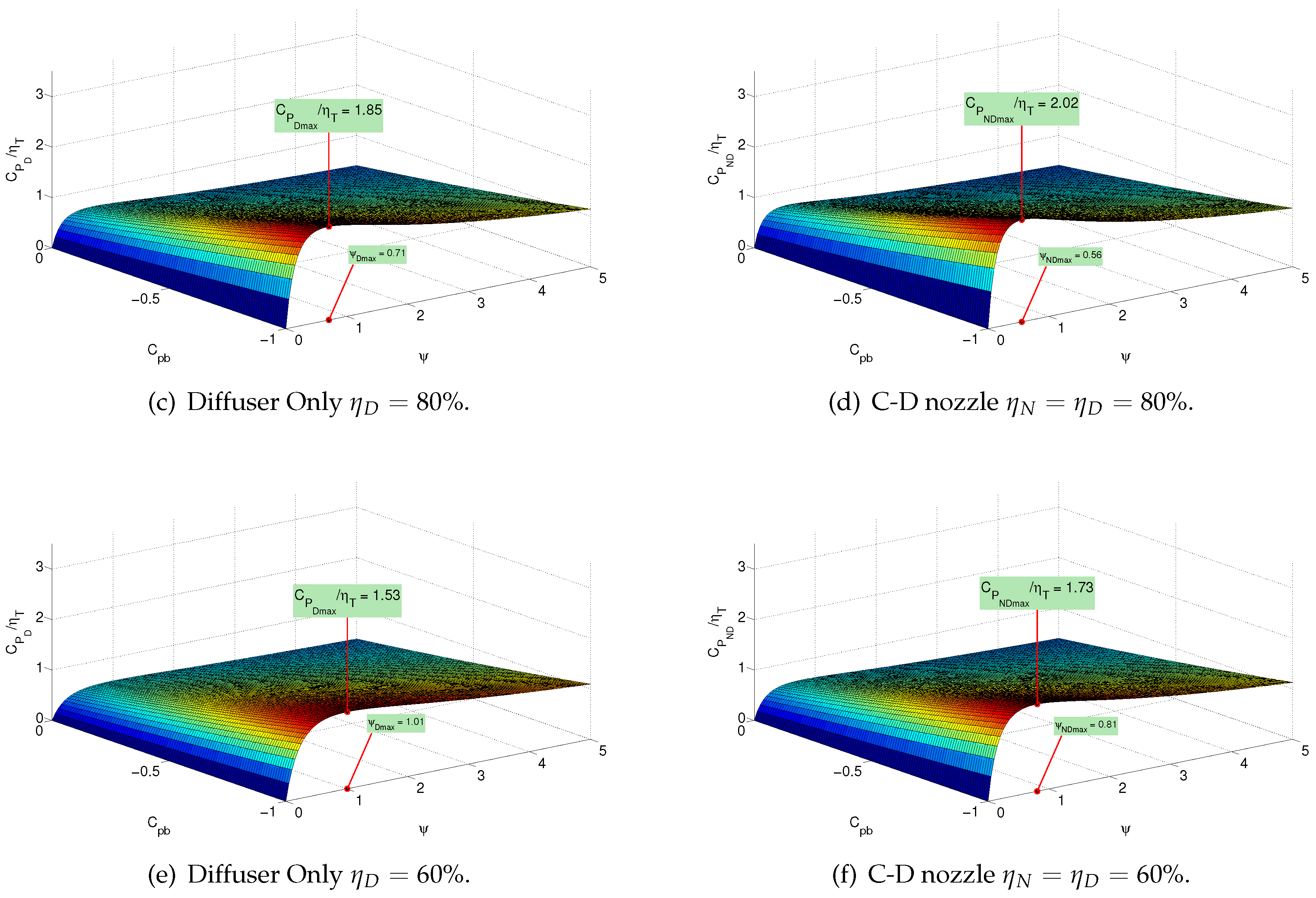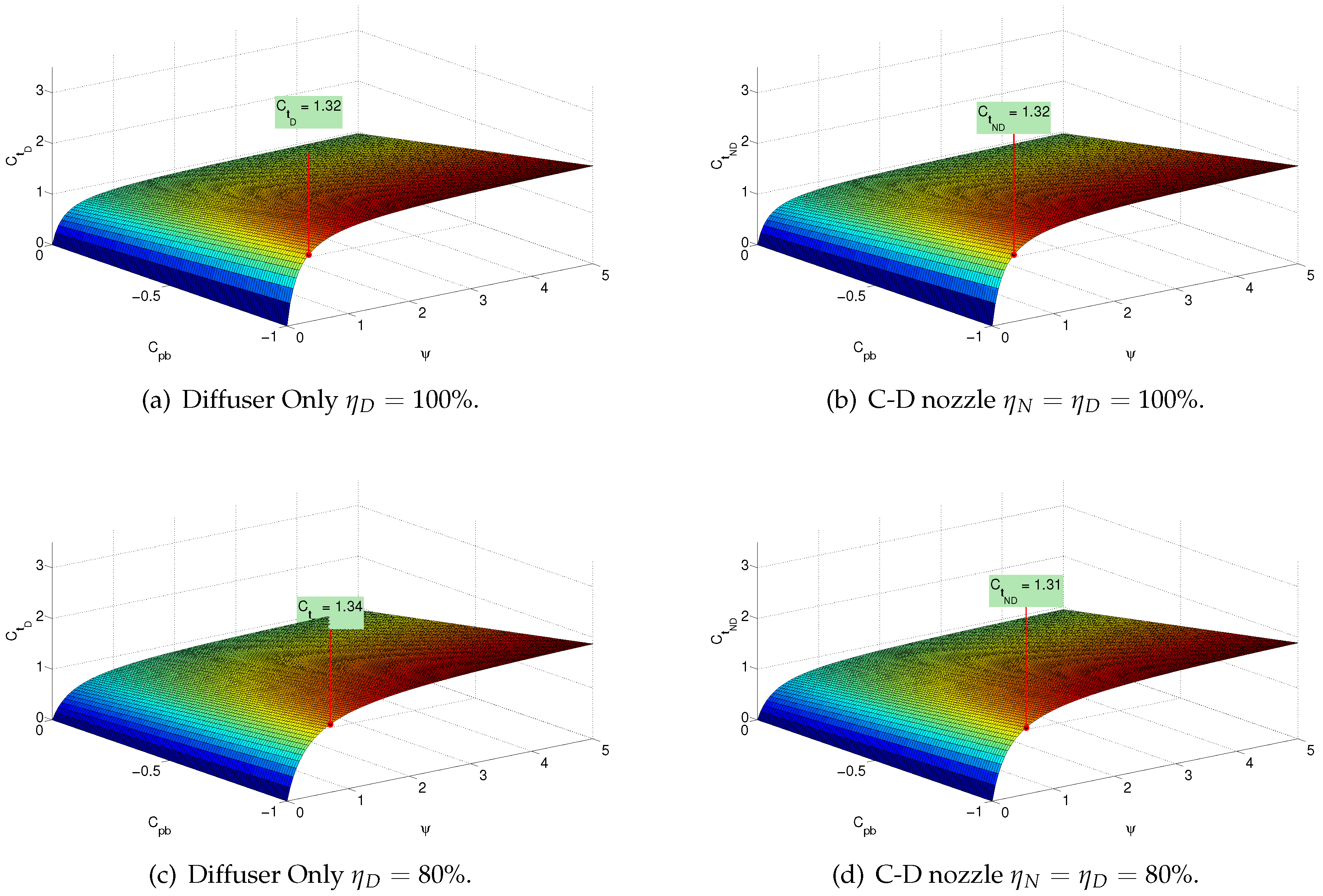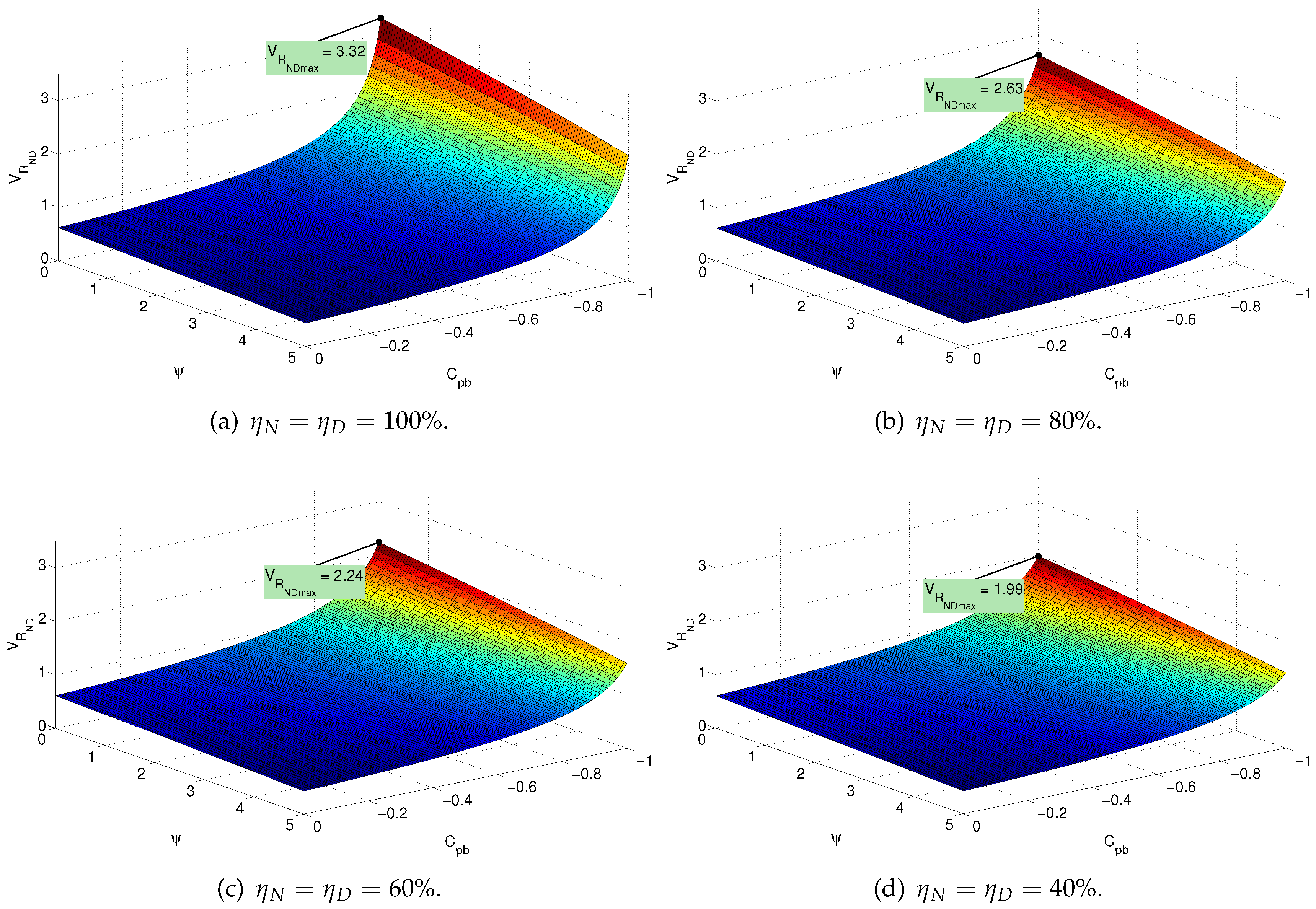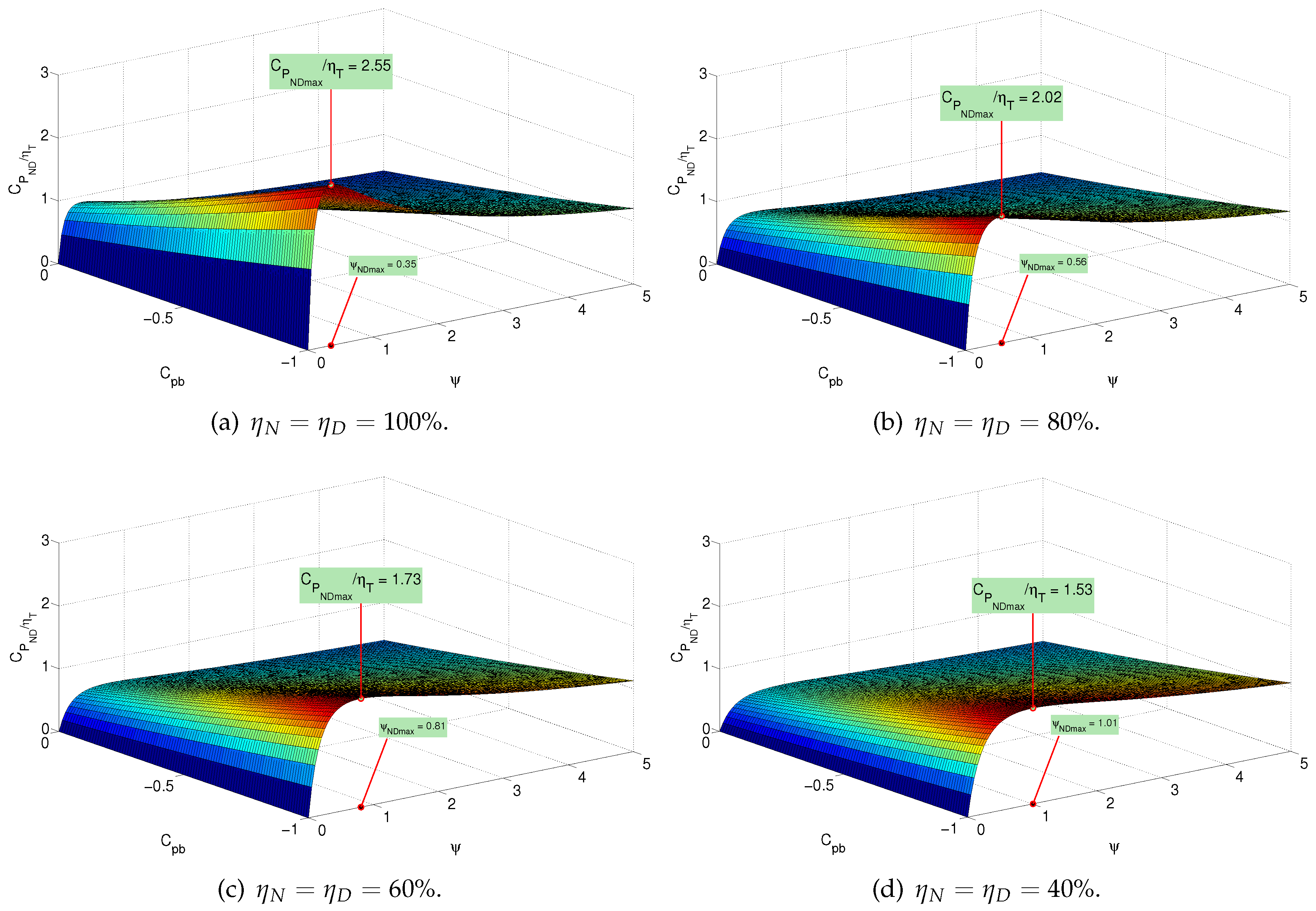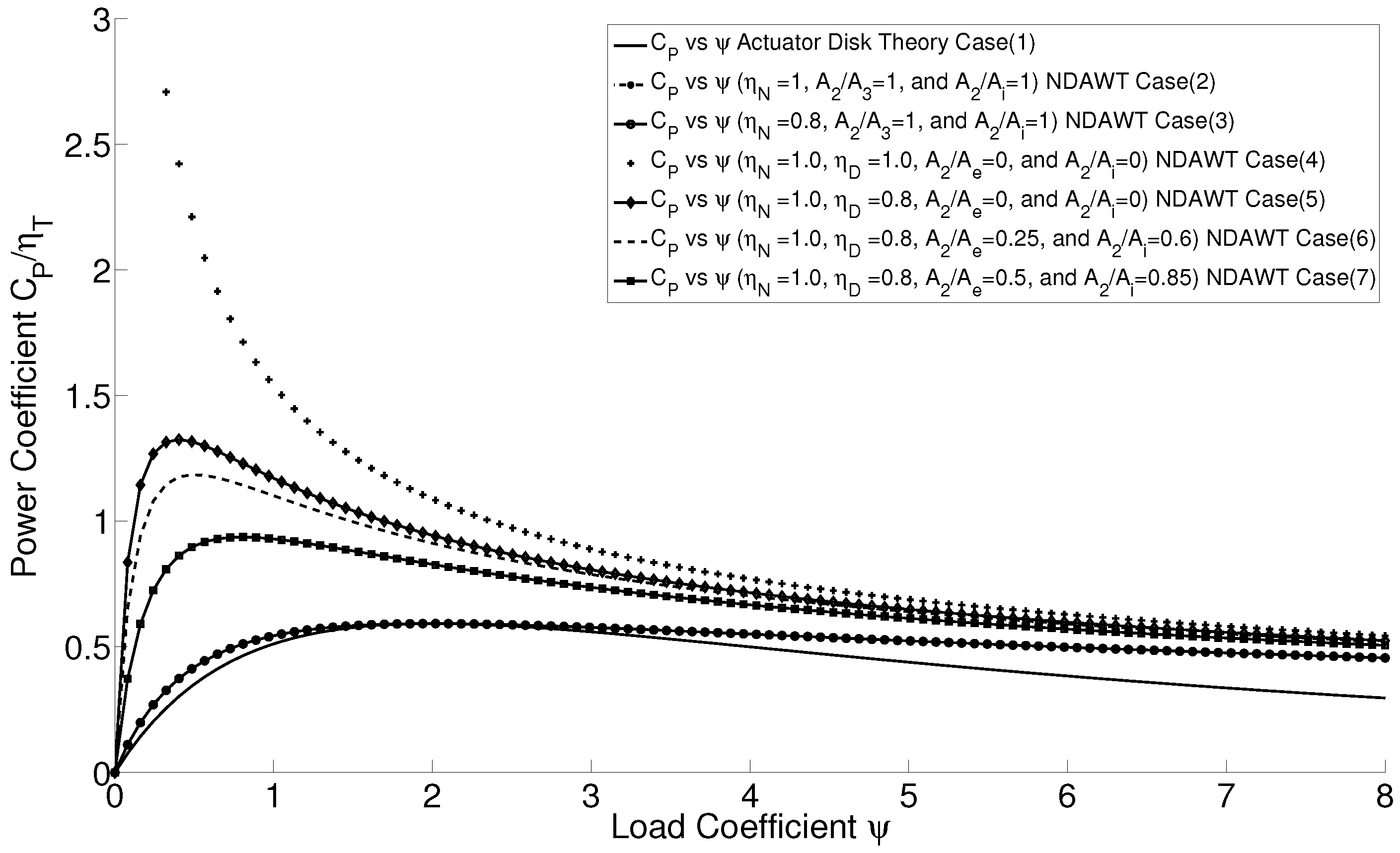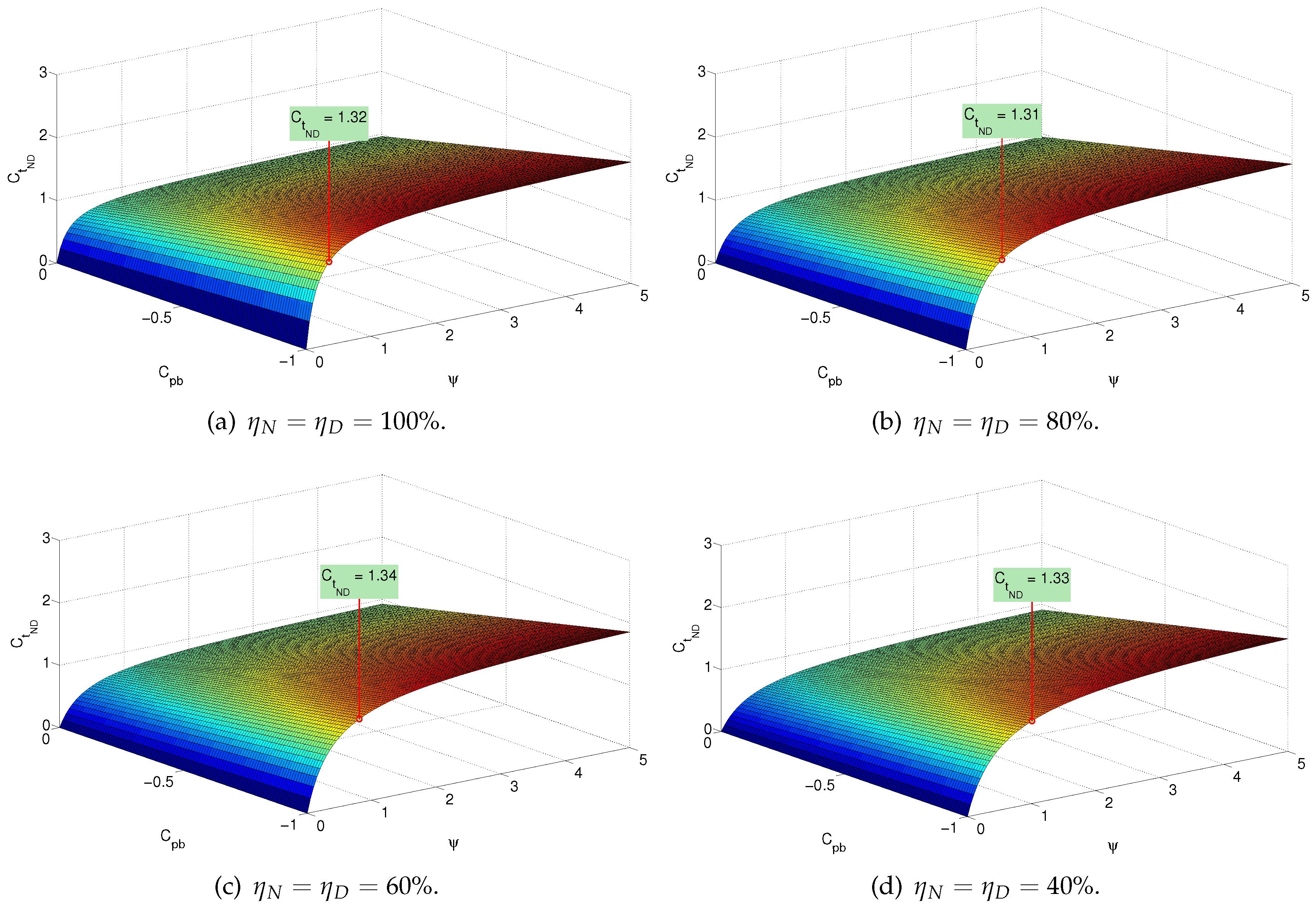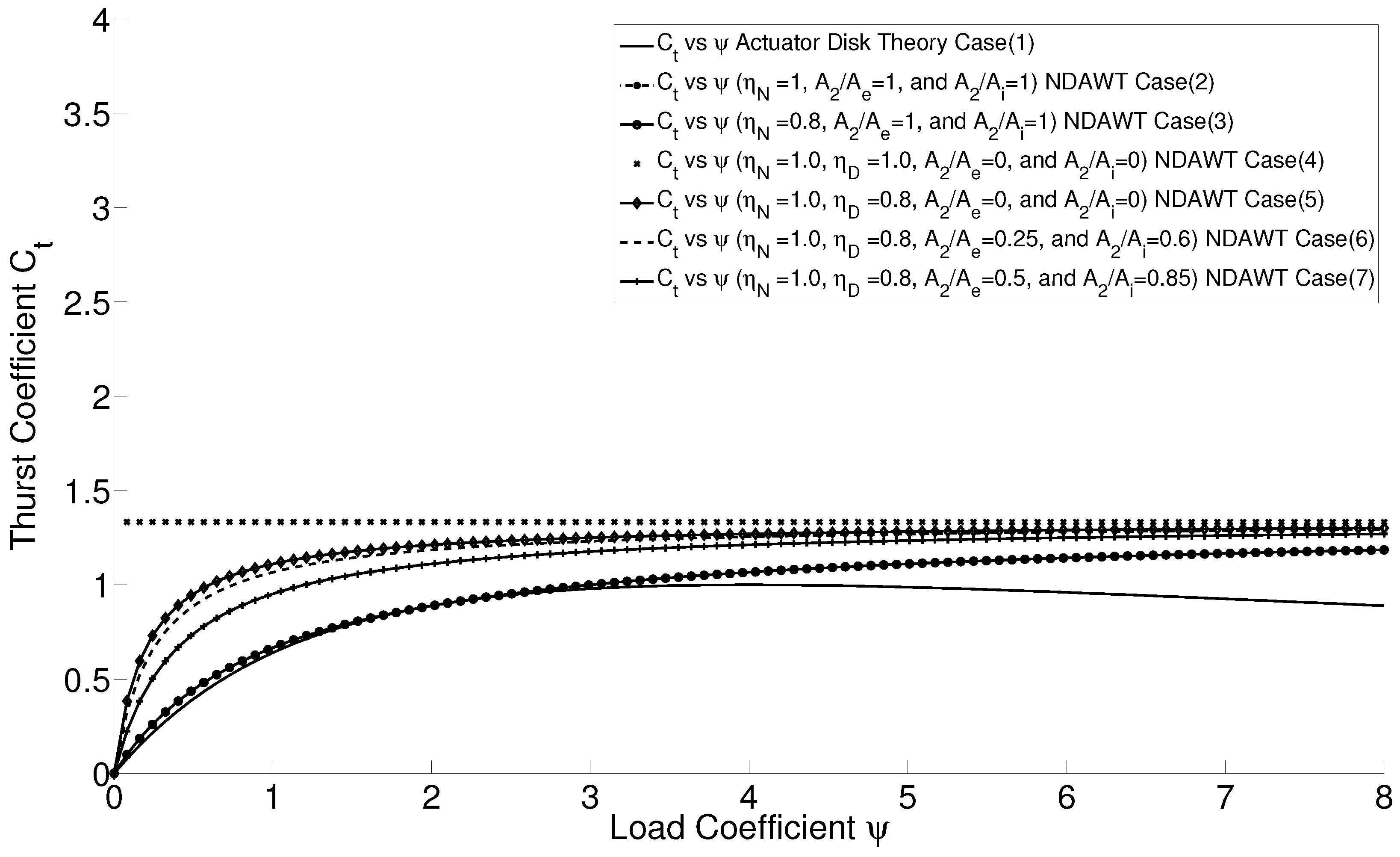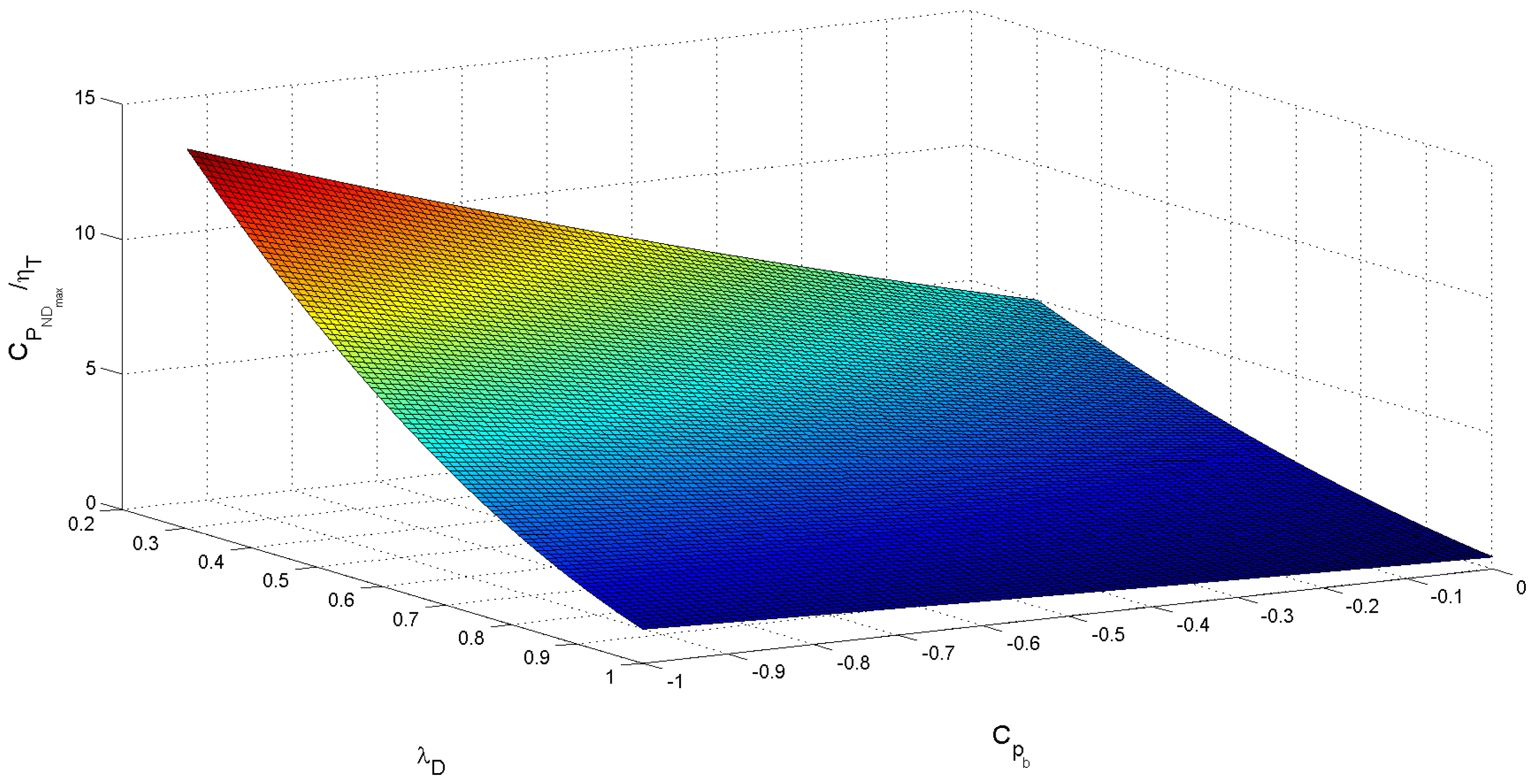1. Introduction
There are numerous unresolved problems if one wants to increase the power production of a conventional wind turbine by simply increasing the diameter of the rotor, e.g., transportation, installation and maintenance, to name a few. Due to this fact, integration of wind generators into a national or regional power grid can be inhibited by the unacceptable reliability of very large units or the economic liability of many smaller units of comparable total power output. These technical factors interact with the economic constraints associated with matching supply and demand schedules in variable wind, the low power density of wind, the high development risk of new system concepts and the capital intensive nature of wind power systems.
Many of these capital and performance challenges of conventional wind turbine systems could be potentially reduced or eliminated by enclosing the wind turbine in a suitably-shaped duct. A duct structure typically provides a diffuser section behind the rotor that produces a power augmentation of considerable magnitude (typically 1.5- to two-fold) for a given size rotor, as well as the dampening of gusts, reducing performance sensitivity to wind directionality and raising the level of axial velocity significantly [
1].
The actuator disk theory for open flow wind turbines has been established for about 90 years, while shrouded horizontal axis wind turbines or diffuser-augmented wind turbines (DAWT) have been in development for more than five decades with no large commercial success to date. Unfortunately, one influential early investigator, Betz [
2], concluded that diffusers were not economical for contemporaneous applications. Although this result was based on correct theory, it made the overly restrictive assumption that the diffuser exit pressure is equal to the ambient or free stream atmospheric pressure.
An experimental approach for ducted wind turbines was undertaken by Lilly and Rainbird [
3] in the 1950s, and in the 1970s, a significant number of experiments were carried out by Foreman [
1,
4] from the Grumman Aerospace department. However, conclusions from these experiments varied significantly. The Lilly and Rainbird study concluded that no performance improvements were conceivable when the performance is normalized by the exit area of the diffuser, whereas Foreman [
1] confirmed a power increase by a factor of four compared to the same rotor operating as a conventional or bare wind turbine. These research works performed not only experiments, but also developed theoretical models to verify their results. However, these models lacked a complete explanation of the major flow phenomena occurring in DAWTs. Shrouded horizontal axis wind turbines were a subject undergoing intense study at the Wind Energy Innovative System Conference in 1979. One of the major conclusions from this conference was that the economical applications of such turbines seemed not feasible at the time because of the high cost of the shroud, although the power augmentation was interesting. The expeditious development of bare horizontal axis wind turbines at around the same time led to the disappearance of DAWTs from research agendas.
Recently, however, an increase in the number of publications on the topic and attempts to commercialize the idea indicate a renewed interest in shrouded turbines. Researchers have come to the agreement that there is significant potential for improvements in this concept, and understanding the details of the flow physics is one of the keys. An investigation by Hansen [
5] using both low-fidelity momentum theory and computational fluid dynamics (CFD) demonstrates that the power augmentation of a shrouded turbine is proportional to the increase in mass flow rate through the turbine blades. Furthermore, throughout the past decade, the research group of Ohya [
6] has performed extensive experimental and computational work on this topic, which has led to the development of a high performance “flanged diffuser”, as they call it.
The current work complements the analysis first introduced by Foreman [
1] and backed by Lawn [
7], but derives the results in a rather more general way. However, due to the complexity of the force on a diffuser, a closed theory cannot be established, and the analysis needs to be augmented with empirical data. The remainder of the article is organized as follows.
Section 2 gives an overview of other analytical methods in the literature.
Section 3 derives the newly-extended theory, and
Section 4 verifies and validates the theoretical results with experimental and CFD data.
Section 5 provides a comparison between augmentation with a diffuser only and with a converging-diverging nozzle.
Section 6 shows performance predictions of NDAWT systems by changing area ratios of the nozzle and diffuser, diffuser and nozzle efficiencies, velocity ratios and back pressure coefficients. Finally,
Section 7 concludes this article.
2. Review of Previous Analytical Models
Researchers have developed several basic 1D theoretical models to predict the power production of wind turbines, including the well-known one-dimensional momentum analysis of the flow over a horizontal axis wind turbine leading to the famous Betz limit. Predictions for the power output of a shrouded wind turbine have been published by, amongst others, Foreman (1978) [
1], Lawn (2003) [
7], van Bussel (2007) [
8], Jamieson (2008) [
9], as well as Werle and Presz (2008) [
10]. However, the results of these models vary; for instance, the predictions of the thrust coefficient at the maximum power coefficient differ based on the underlying theory, as explained in more detail below. In addition, some lack a complete description of the major flow phenomena, rendering most of the models either valid for only short diffusers or entirely invalid [
11]. Next, the various theories and their shortcomings are discussed briefly.
Van Bussel (2007) [
8] developed a theoretical model based on Betz’s theory. The continuity equation, as well as the momentum equation were used in the analysis. However, it was assumed that just downstream of the physical diffuser, the velocity is the average of the velocity far upstream and far downstream, i.e., the relation that is valid for the velocity at the rotor plane for the case of a conventional wind turbine. This assumption is only valid for the case of a short diffuser, i.e., if the diffuser exit plane is not too far off the rotor plane for which the assumption that was made regarding the average velocity is still somewhat justified, since it is certainly not true in long diffusers. Thus, the one-dimensional flow theory of van Bussel [
8], though consistent with the case of the conventional wind turbine without diffuser, is not valid for longer diffusers [
11].
Jamieson (2008) [
9] derived a one-dimensional theory similar to the one of van Bussel. However, the diffuser is taken into account by assuming an induction factor at zero thrust. This decoupling is not ideal, since the diffuser performance is influenced by the thrust exerted by the rotating blades. He concludes that a DAWT operates optimally at the same conditions as a bare turbine with a thrust coefficient of 8/9. According to Konijn [
11], the theory leads to an incorrect power coefficient of 32/27 (instead of the correct 16/27) when regarding the diffuser with an area ratio between the downstream exit and rotor plane of two.
Werle and Presz (2008) [
10] use a different models for the diffuser. They assume that the effect of the diffuser can be modeled by a force on the fluid pointing against the direction of the flow. This force is modeled to be proportional to the rotor resistance. The rest of their derivation for the power coefficient is very similar to the one leading to the Betz limit, except for the presence of the force exerted by the diffuser on the fluid. The one-dimensional flow theory by Werle and Presz is questionable since the force is not necessarily proportional to the rotor resistance. For instance, the theory breaks down when the value of the loading coefficient is equal to two [
11].
In summary, all of the methods mentioned above predict a maximum thrust coefficient equal to 8/9 for a DAWT; however, this is incorrect due to false assumptions made in the respective derivations. Foreman (1978) [
1] and Lawn (2003) [
7], on the other hand, show that optimal operating conditions occur at thrust coefficient values either higher or lower than 8/9 depending on the loading coefficient, back pressure coefficient and diffuser efficiency.
5. Diffuser Only vs. Converging-Diverging Nozzle
The main contribution of this article is to account for the physical effect of the addition of a nozzle to a diffuser shape, i.e., the consideration of a converging-diverging (C-D) nozzle for the shroud. In order to motivate the importance of this addition,
Figure 7,
Figure 8 and
Figure 9 have been created using the newly-developed generalized 1D momentum theory for the C-D nozzle, whereas the old momentum theory by Foreman et al. [
1] (which is included as a limiting case in the new theory) is used for the diffuser only results.
Figure 7 illustrates the velocity distribution, and one can notice the same velocity distribution for the diffuser only and C-D nozzle case if the efficiencies of both the nozzle and diffuser are equal to
. However, for efficiencies less than
and the same back pressure coefficient, one can observe that the C-D nozzle performs always better than the diffuser only and that adding a nozzle could lead to a
increase in the power production, as illustrated in
Figure 8 and
Figure 9. In addition, based on viscous CFD simulations conducted by the authors, the nozzle has a secondary effect of decreasing the back pressure by up to
, as well leading to an even greater increase in power generation. Thus, the authors believe that one should use C-D nozzles as the design starting point for shrouds, and thus, the theory by Foreman et al. has been extended.
6. Results and Discussions
Equation (
33) allows the relative velocity ratio,
, through a shrouded wind turbine with nozzle to be computed as a function of the loading coefficient
ψ, the back pressure
, as well as diffuser and nozzle efficiencies
,
, as illustrated in
Figure 10. As can be inferred from
Figure 10a, for perfect efficiencies of both the diffuser and nozzle, values above two for the velocity ratio can be obtained. It can also be noticed that higher values are achieved if the the wind turbine is operating at lower loading coefficients and lower back pressures. However, due to flow separation in the diffuser for larger exit areas, values for the back pressure coefficient below
can likely not be achieved. Similar behavior can also be observed at lower efficiencies, albeit with lower velocity ratios.
In
Figure 11a, cross-sectional view of the plots in
Figure 10 are shown using
, which corresponds to the back pressure coefficient for the Betz limit. One can observe how the nozzle and diffuser can increase the velocity ratio above the maximum of one for a bare wind turbine given by Equation (
18).
As expected, when the area of the diffuser outlet and nozzle inlet area equal the rotor area Cases (2) and (3), the velocity ratio reduces approximately to one. On the other hand, when both areas of the nozzle inlet and the diffuser outlet are infinite in the limit of no load on the rotor Case (4), the velocity ratio could be theoretically infinite since the convergent-divergent nozzle or shrouded turbine is collecting from and expanding to an infinite area. In practice viscous effects such as flow separation make this behaviour impossible. The figure also shows the effect of the area ratio on the velocity ratio through Cases (6)–(7) for realistic efficiencies. It can be noticed that for values of the loading coefficients less than
, it is conceivable to obtain higher velocity ratios [
7].
Figure 12 provides the effect of the diffuser and nozzle efficiencies, the back pressure, as well as the loading coefficient on the power coefficient based on Equation (
36). A significant observation is that the maximum power coefficient occurs at lower loading coefficients than that for the Betz limit of two. For realistic back pressure values, the power coefficient can be much higher than the one for a bare wind turbine of
.
Figure 13 shows cross-sectional views of the plots in
Figure 12 using again
. It is easy to see that for a maximum power extraction for a given turbine blade area, a much more lightly loaded design should be chosen for the ducted case [
7] compared to a conventional wind turbine and that the power extraction can be much higher.
In
Figure 14, the thrust coefficient is plotted for different values of the loading coefficient, the back pressure coefficient, as well as the nozzle and diffuser efficiencies
and
using Equation (
34).
For unrealistic low values of the back pressure of
,
Figure 14a shows that for a loading coefficient of
, the thrust coefficient could reach two instead of
, as in the Betz limit. Furthermore, for realistic values of the back pressure of
and a loading coefficient of
, it can be noticed that the thrust coefficient can be lower than
. This makes sense since one obtains higher velocities at the throat, which lowers the pressure. Therefore, the thrust would be lower, since it is a function of the pressure. Finally, it can be observed through
Figure 14a–d that as the efficiencies for both the diffuser and nozzle decrease, the thrust coefficient tends to decrease, as well.
Figure 15 displays cross-sectional views of the plots in
Figure 14 using again
. One should keep in mind that the thrust coefficient is the product of the velocity ratio times the loading coefficient. One can see that in Case (1), the maximum thrust happens at
at a value of
. One can also notice that for infinite values of the nozzle (inlet) and diffuser (outlet) areas Case (4), a maximum thrust coefficient of
is obtained. Using realistic values of the area ratio in Cases (6) and (7), we see that values higher than
can be experienced by the wind turbine for higher loading coefficients. However, it is also possible to achieve a thrust coefficient lower than
for smaller loading coefficients. The reason to work with a lower thrust coefficient is to obtain higher velocities at the rotor plane and lower pressures at the exit plane [
7].
Lastly, for preliminary design purposes,
Figure 16 shows how the maximum power coefficient obtained at the optimal loading varies as a function of back pressure and diffuser area ratio. The designer should try to decrease the back pressure and diffuser area ratio as much as possible until viscous effects, such as flow separation, take over and render these results invalid.
7. Conclusions
Numerous theoretical models were examined to predict the flow through shrouded turbines. It was found that some of the theories are only valid for short diffusers or predict incorrect values for certain area ratios due to incorrect assumptions. A more generalized theory based on work by Foreman [
1] was developed in this article to be able to incorporate C-D nozzles into the shroud design. The developed generalized one-dimensional momentum theory showed reasonable agreement with experimental field data and CFD results from the literature.
It is evident from the developed equations that the nozzle and diffuser efficiencies, and , as well as the back pressure coefficient, , have the most significant impact on a nozzle diffuser-augmented wind turbine (NDAWT). Since these coefficients must be empirically determined, the developed generalized one-dimensional theory is, in practice, a semi-empirical theory. However, the theory provides a clear path for the preliminary design of NDAWT geometries, and the design focus should be on maximizing the nozzle and diffuser efficiencies, as well as lowering the back pressure at the diffuser exit with the help of, for example, flanges or brims.
Finally, according to the newly-developed generalized theory, it is shown that larger power coefficients than for conventional wind turbines can be achieved and that the maximum thrust could be higher or lower than that for a conventional wind turbine depending on the loading coefficient at which the shrouded turbine would operate.
